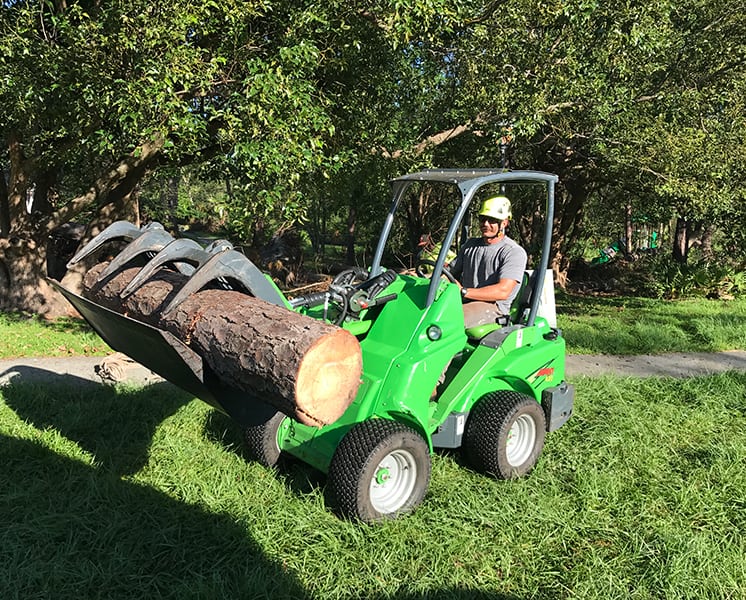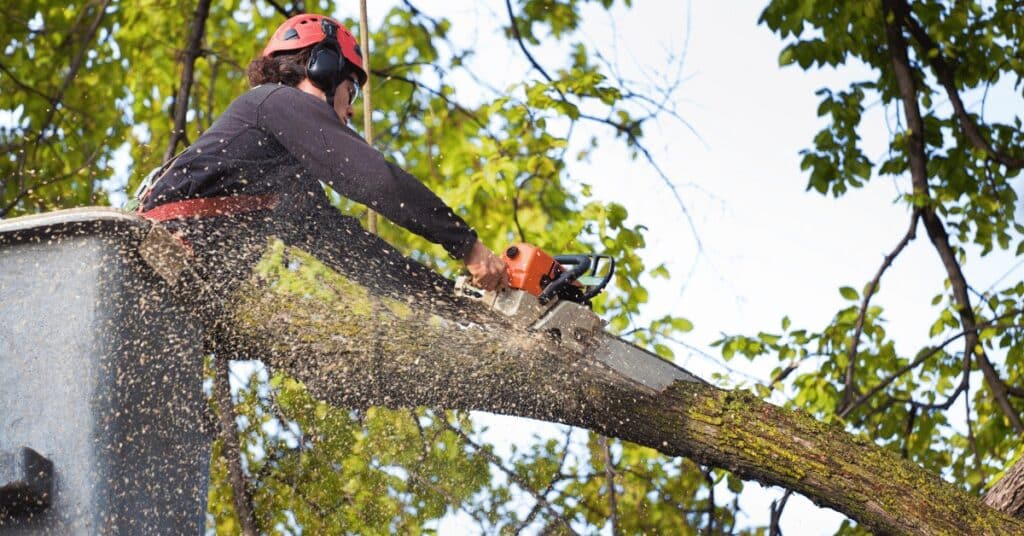By: Shelby McCullough| Published: December 18, 2025
Land clearing is a crucial process that involves the removal of trees, stumps, shrubs, and other obstacles from a piece of land to prepare it for development or agricultural use. It plays a significant role in transforming wild or overgrown land into usable space, facilitating construction projects, farming, and enhancing property aesthetics. In this blog, we’ll delve into what land clearing entails, exploring its various aspects and benefits.

Understanding Land Clearing
What Does Land Clearing Entail?
Land clearing entails a series of activities designed to remove natural obstructions from a plot of land. This process is essential for various purposes, including construction, agriculture, and land development. Key components of land clearing include:
- Tree Removal: This involves cutting down trees and removing their stumps and roots. It’s essential for creating open space for building projects or agricultural activities.
- Brush Clearing: Removing bushes, shrubs, and other undergrowth that can hinder development or farming operations.
- Stump Grinding: Grinding down tree stumps to below ground level to prevent regrowth and make the land smooth for construction or planting.
- Debris Removal: Clearing away all the leftover debris, including logs, branches, and foliage, to ensure the land is clean and ready for use.
The Importance of Land Clearing
Land clearing is vital for several reasons:
- Site Preparation: For any construction project, whether residential, commercial, or agricultural, clearing the land is the first step in site preparation.
- Safety: Removing large trees and heavy undergrowth reduces the risk of accidents during construction or farming.
- Pest Control: Clearing dense vegetation helps control pests that may thrive in overgrown areas, such as rodents and insects.
- Enhanced Aesthetics: Land clearing improves the visual appeal of a property, making it more attractive for potential buyers or investors.

Steps Involved in Land Clearing
1. Planning and Assessment
Before starting the land clearing process, a thorough assessment of the site is necessary. This includes evaluating the type and density of vegetation, soil condition, and any potential hazards. A well-planned approach ensures the clearing process is efficient and environmentally responsible.
2. Permitting and Regulations
Obtaining the necessary permits and adhering to local regulations is crucial. Land clearing activities are often subject to environmental laws to protect natural habitats and prevent soil erosion. Compliance with these regulations is essential to avoid legal issues.
3. Clearing the Land
Tree and Vegetation Removal
- Tree Cutting: Using chainsaws or heavy machinery to cut down trees.
- Stump Removal: Excavators or stump grinders are used to remove tree stumps and roots.
- Brush Clearing: Bulldozers or brush mowers clear away bushes and undergrowth.

Debris Management
After removing the vegetation, the debris must be managed properly. This can involve chipping wood, burning debris in controlled environments, or hauling it away to designated disposal sites.
4. Land Grading and Soil Preparation
Once the vegetation is cleared, the land is graded to ensure a level surface. This step is crucial for construction projects to provide a stable foundation. Soil preparation may also involve adding topsoil or other amendments to enhance soil fertility for agricultural purposes.
5. Erosion Control
Implementing erosion control measures, such as installing silt fences, mulching, or planting cover crops, helps prevent soil erosion and protects nearby water bodies from sediment runoff.
Benefits of Professional Land Clearing
Hiring professional land clearing services offers several advantages:
Expertise and Efficiency
Professional land clearing companies have the expertise and equipment to handle large-scale clearing projects efficiently. They ensure that the job is done safely and within the stipulated time frame.
Environmental Considerations
Certified land clearers follow environmentally responsible practices, minimizing the impact on surrounding ecosystems. They are knowledgeable about local regulations and ensure compliance to protect natural habitats.
Cost-Effective Solutions
While DIY land clearing might seem cost-effective, it often leads to higher expenses due to the need for specialized equipment and potential errors. Professionals provide cost-effective solutions by completing the job correctly the first time.

Common Methods of Land Clearing
Manual Clearing
This method involves using hand tools like axes, hoes, and chainsaws. It’s suitable for small-scale projects but can be labor-intensive and time-consuming for larger areas.
Mechanical Clearing
Heavy machinery, such as bulldozers, excavators, and brush mowers, is used to clear large areas quickly. Mechanical clearing is efficient but requires skilled operators to avoid damage to the land.
Chemical Clearing
Herbicides are used to kill unwanted vegetation. This method is effective for large areas but must be used cautiously to prevent environmental contamination.
Controlled Burning
Also known as prescribed burning, this method involves setting controlled fires to clear vegetation. It is effective but requires careful planning and adherence to safety regulations to prevent wildfires.
Land Clearing and Environmental Impact
Balancing Development and Conservation
While land clearing is essential for development, it’s crucial to balance it with environmental conservation. Practices such as selective clearing, replanting trees, and preserving natural habitats help mitigate the environmental impact.
Mitigating Soil Erosion
Clearing land can expose soil to erosion. Implementing erosion control measures, such as planting cover crops and using erosion control mats, helps protect the soil and maintain its fertility.
Promoting Biodiversity
Selective clearing and replanting native species promote biodiversity. This approach ensures that the cleared land supports various plant and animal species, maintaining ecological balance.
FAQs
What is land clearing?
Land clearing entails the removal of trees, shrubs, stumps, and other vegetation from a piece of land to prepare it for construction, agriculture, or development.
Why is land clearing important?
Land clearing is crucial for site preparation, safety, pest control, and enhancing the visual appeal of a property.
What methods are used in land clearing?
Common methods include manual clearing, mechanical clearing, chemical clearing, and controlled burning.
How does land clearing impact the environment?
Land clearing can lead to soil erosion and habitat destruction. However, environmentally responsible practices, such as selective clearing and replanting, help mitigate these impacts.
What are the benefits of hiring professional land clearing services?
Professionals offer expertise, efficiency, and cost-effective solutions while ensuring compliance with environmental regulations.
Land clearing is a vital process that transforms overgrown land into usable space for development and agriculture. By understanding what land clearing entails and following responsible practices, we can balance the need for development with environmental conservation. Whether for a construction project or agricultural expansion, professional land clearing services ensure a safe, efficient, and environmentally conscious approach to preparing land for its next purpose.

